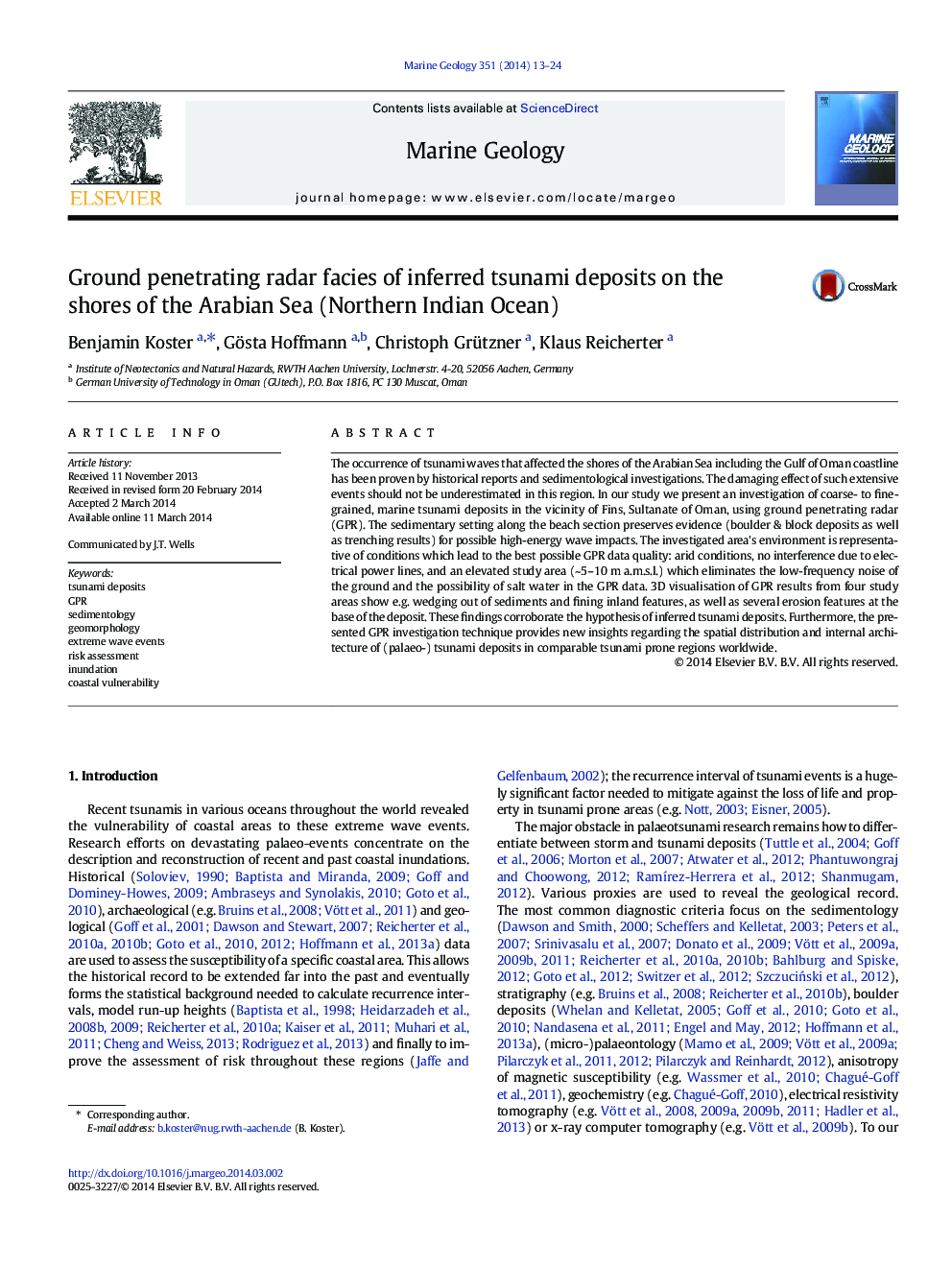| Article ID | Journal | Published Year | Pages | File Type |
|---|---|---|---|---|
| 6441750 | Marine Geology | 2014 | 12 Pages |
Abstract
The occurrence of tsunami waves that affected the shores of the Arabian Sea including the Gulf of Oman coastline has been proven by historical reports and sedimentological investigations. The damaging effect of such extensive events should not be underestimated in this region. In our study we present an investigation of coarse- to fine-grained, marine tsunami deposits in the vicinity of Fins, Sultanate of Oman, using ground penetrating radar (GPR). The sedimentary setting along the beach section preserves evidence (boulder & block deposits as well as trenching results) for possible high-energy wave impacts. The investigated area's environment is representative of conditions which lead to the best possible GPR data quality: arid conditions, no interference due to electrical power lines, and an elevated study area (~5-10Â m a.m.s.l.) which eliminates the low-frequency noise of the ground and the possibility of salt water in the GPR data. 3D visualisation of GPR results from four study areas show e.g. wedging out of sediments and fining inland features, as well as several erosion features at the base of the deposit. These findings corroborate the hypothesis of inferred tsunami deposits. Furthermore, the presented GPR investigation technique provides new insights regarding the spatial distribution and internal architecture of (palaeo-) tsunami deposits in comparable tsunami prone regions worldwide.
Keywords
Related Topics
Physical Sciences and Engineering
Earth and Planetary Sciences
Geochemistry and Petrology
Authors
Benjamin Koster, Gösta Hoffmann, Christoph Grützner, Klaus Reicherter,
